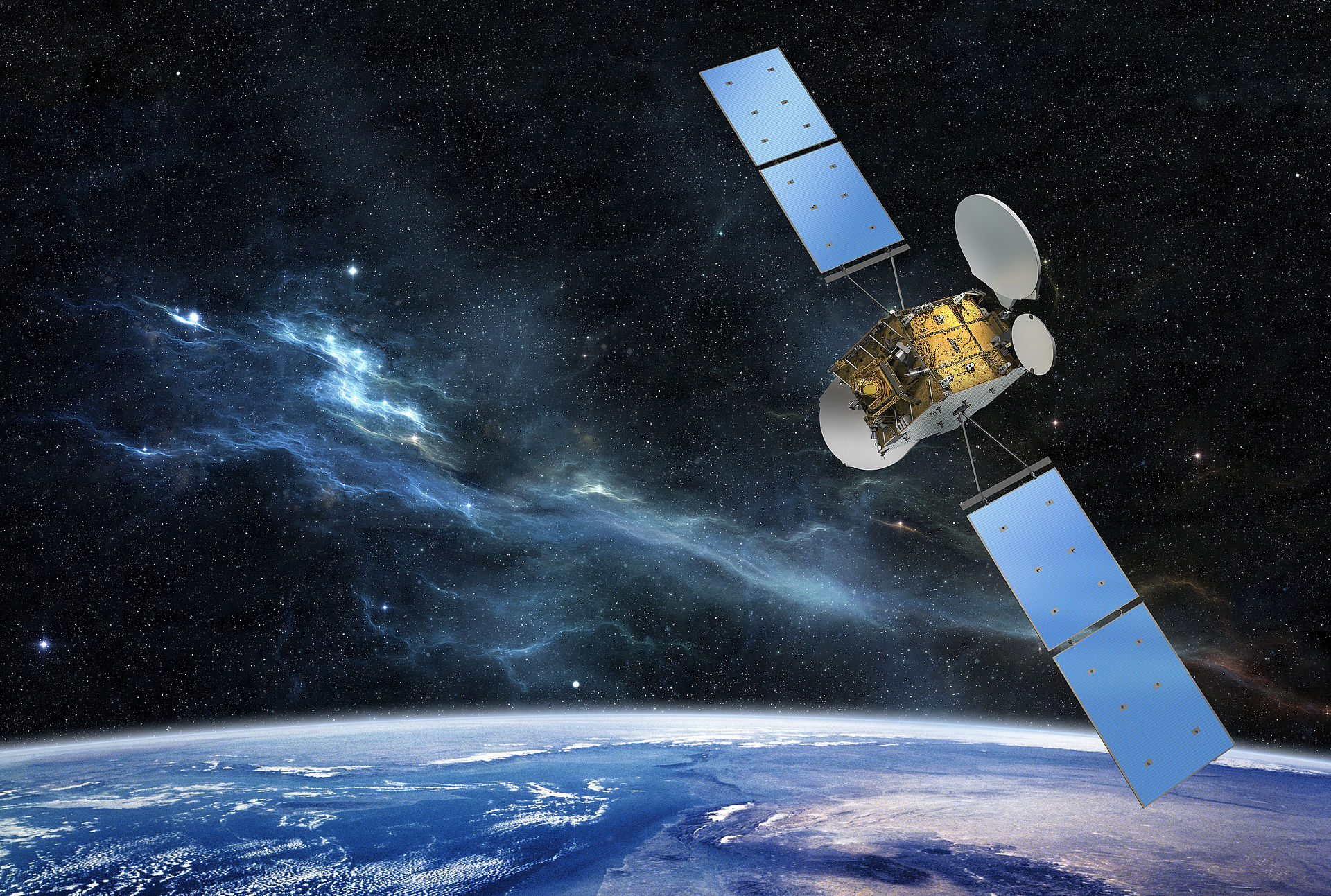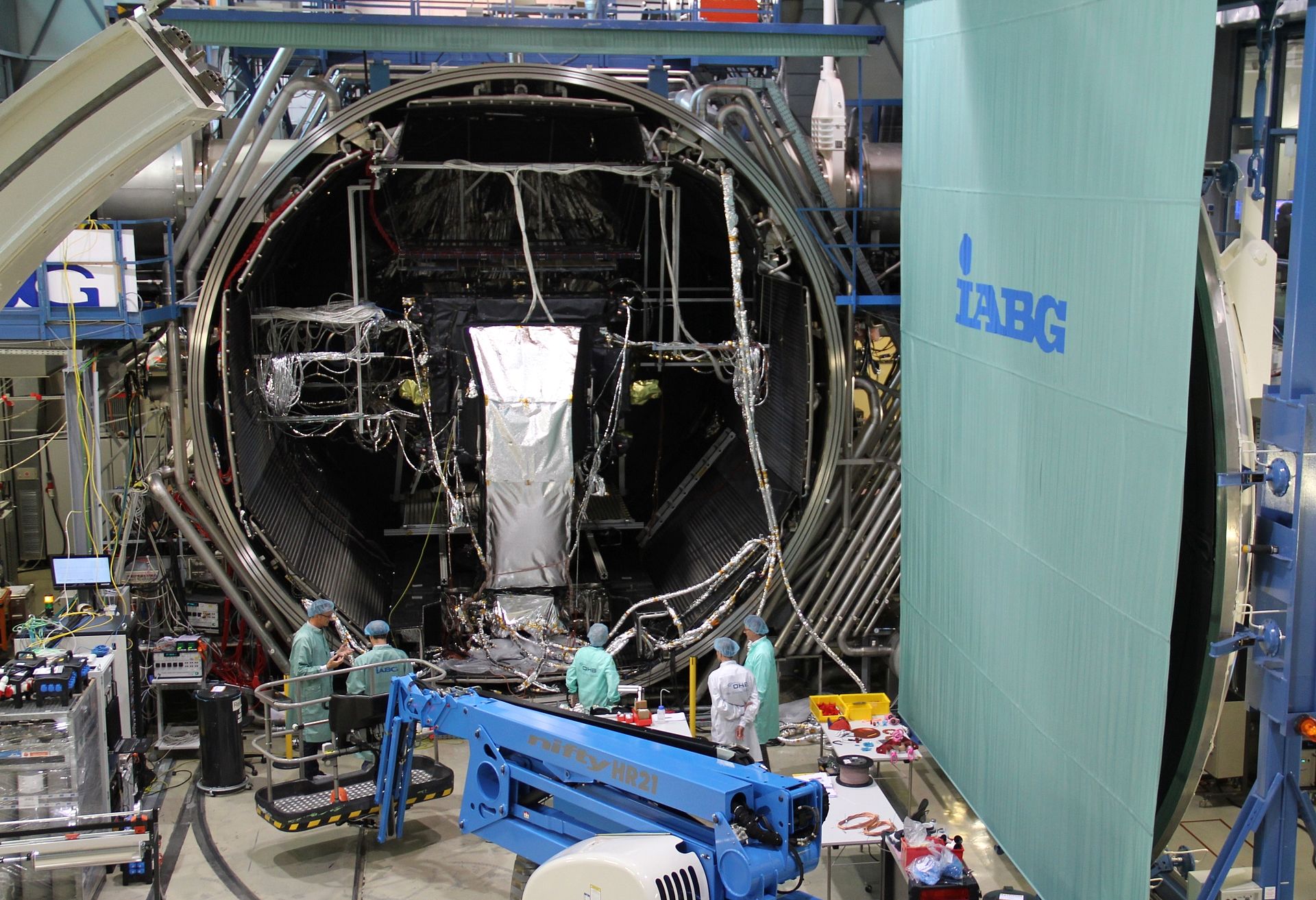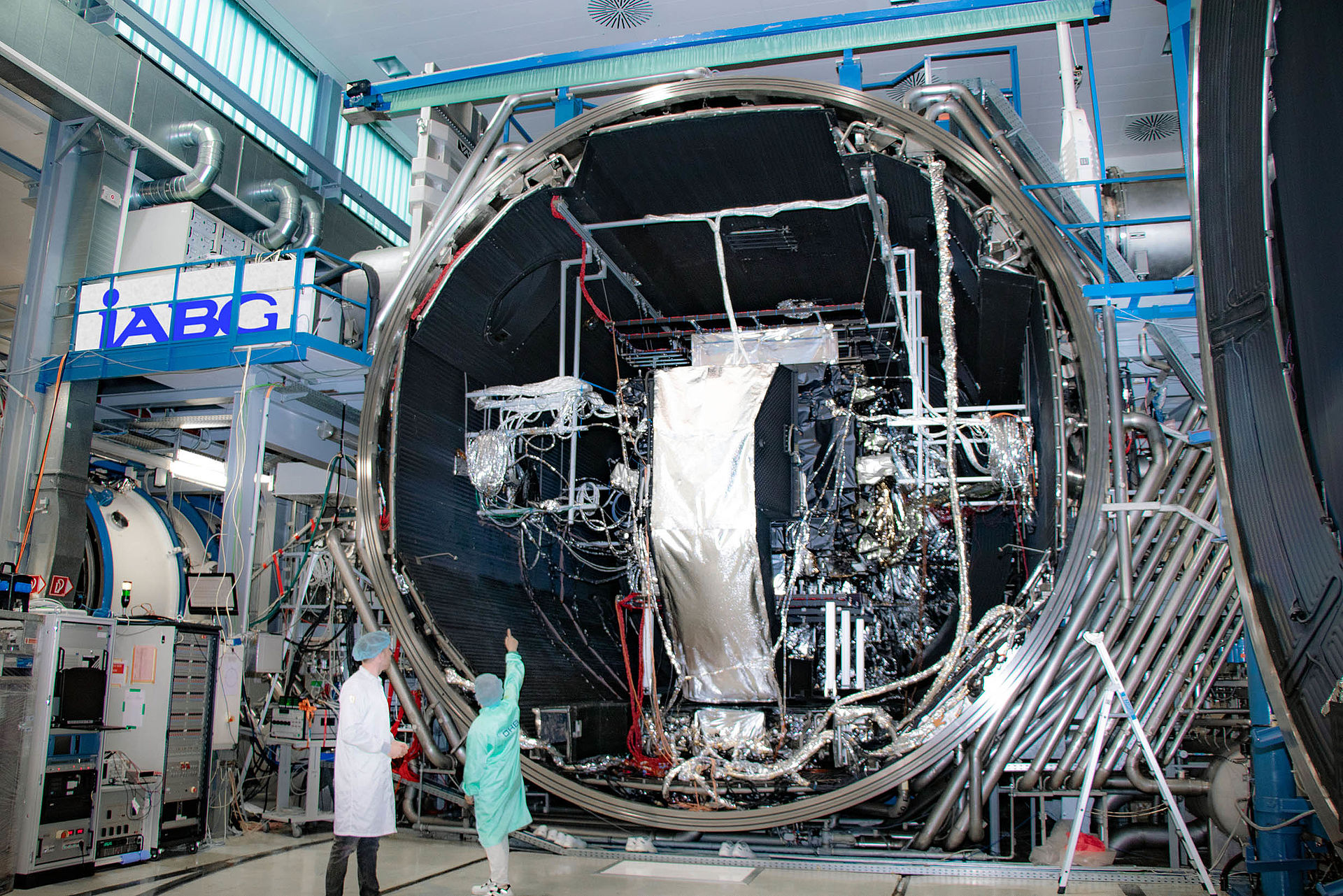
Bremen/Ottobrunn, 10. August 2018. OHB System AG, a subsidiary of the Bremen-based space and technology group OHB System AG, is the principal contractor for the development and construction of the EDRS-C satellite for the European Data Relay System (EDRS). The European Data Relay System, which is also referred to as SpaceDataHighway, is a public–private partnership between ESA and Airbus. The telecommunications satellite arrived at the IABG space testing center on May 25, 2018, where it he has been undergoing several months of testing before it is launched into space. The satellite has successfully passed the first test, the so-called space simulation test. This represents an important milestone.
Grilled and deep-frozen - all at the same time!
“In space, all satellites are exposed to heavy radiation as well as the influence of a vacuum and extreme temperature differences. These can range from -150 degrees Celsius to +150 degrees Celsius“, explains EDRS-C project manager Dr. Stefan Voegt. “To avoid being damaged, the satellite must be fitted with a sophisticated thermal system as - put simply - it is grilled and deep-frozen all at the same time in space!”
The space simulation test quickly reveals whether the thermal experts responsible for planning the systems for distributing and dissipating excess heat or cold in and around the satellite have done their homework. This is where the satellite gains a preliminary taste of what is in store for it at its ultimate destination in space.
Testing for all possible scenarios in space
The space simulation test, which the engineers like to refer to as the “thermal/vacuum test”, was conducted in a large chamber at the IABG space testing center in Ottobrunn close to Munich. With a length of 12 meters and an interior diameter of 6 meters, the chamber has been specifically designed for such strain. The EDRS-C satellite, which has a height of just under 4 meters, rests on a swiveling fixture installed longitudinally inside the chamber. It is surrounded by hundreds of cables and a corresponding number of sensors distributed on and inside the satellite.
As in space, the satellite is exposed to varying temperatures around the clock and, of course, monitored meticulously and the readings recorded.
“After closing the vacuum chamber, the air was pumped out over a period of 24 hours. Our satellite has already had an opportunity of accustoming itself to a vacuum. The next step was to see how it responds to extreme temperatures. The interior walls of the chamber are refrigerated to a temperature of as low as -185 degrees Celsius to achieve the necessary coldness. The satellite is then heated up with infrared radiators located above and below it. This was all done in the defined test cycles. We are very pleased that the satellite has successfully passed the test,” says project manager Dr. Voegt.
Michael Witting, ESA EDRS Project Manager, said: "The completion of the thermal/vacuum test is a significant achievement for EDRS-C. We are working closely with our partners OHB System and Airbus to ensure a successful test campaign."
Extensive test campaign
This preliminary test simulates the conditions in which the satellite will be operating in space. It must not only be able to withstand them but also perform its intended data transmission duties over a period of 15 years, this being its expected service life.
Prior to this, it must also survive the lift-off from the Earth and the journey on board the launcher into weightlessness. “This means that our satellite must also show that it can withstand unscathed the vibration loads that occur at launch and in the phase until it reaches its orbit and thus weightlessness. This is demonstrated in the mechanical test campaign,” explains Dr. Voegt. “A further test checks whether the antennas work as planned and whether the payloads comply with the defined specifications.”
The EDRS-C satellite will remain at the testing center until around April 2019. Roughly five weeks before the scheduled launch date in the second quarter of 2019, it will be shipped to the launch pad in Kourou in French Guyana, where it will be transported into space on board an Ariane 5.
About EDRS-C
Based on the SmallGEO platform developed by OHB as part of ESA’s Advanced Research in Telecommunications Systems (ARTES) program, the EDRS-C telecommunications satellite is expected to be launched in the second quarter of 2019. There, it will join the first satellite EDRS-A at an altitude of 36,000 kilometers. The relay satellite’s geostationary position will offer advantages for future Earth observation missions as it will be possible for the data to be accessed in close to real time. This is why it is frequently referred to as the SpaceDataHighway. A further advantage is the encrypted data downlink to the Earth.
The SmallGEO satellite platform has been modified to meet the specific requirements of this mission: design adjustments have been made to accommodate the special requirements of the optical payload, while the modular telemetrics payload has been widened to include the S and Ka band. In addition, secure encryption electronics have been installed.
The dedicated EDRS-C satellite is fitted with a data relay payload with a laser communications terminal (LCT) for satellite-to-satellite links. Both have been supplied by Tesat-Spacecom. The Ka band antenna will ensure data links with ground stations in Europe at transmission speeds of up to 1.8 Gbps. Also on board the satellite is a hosted payload known as “HYLAS-3” provided by Avanti Communications. OHB System AG has developed and built the satellite in a contract for Airbus.
Information on the European Data Relay System can be found on the ESA website:
http://www.esa.int/Our_Activities/Telecommunications_Integrated_Applications/EDRS
Information on the SmallGEO platform can be found on OHB SE’s website:
https://www.ohb.de/de/space-systems/satelliten/
Contact for media representatives:
Marianne Radel
Head of Corporate Communications
Phone: +49 421 2020 9159
Email: marianne.radel@ohb.de
Contact for investors and analysts:
Marcel Dietz
Investor Relations
Phone: +49 421 2020 6426
Email: ir@ohb.de


